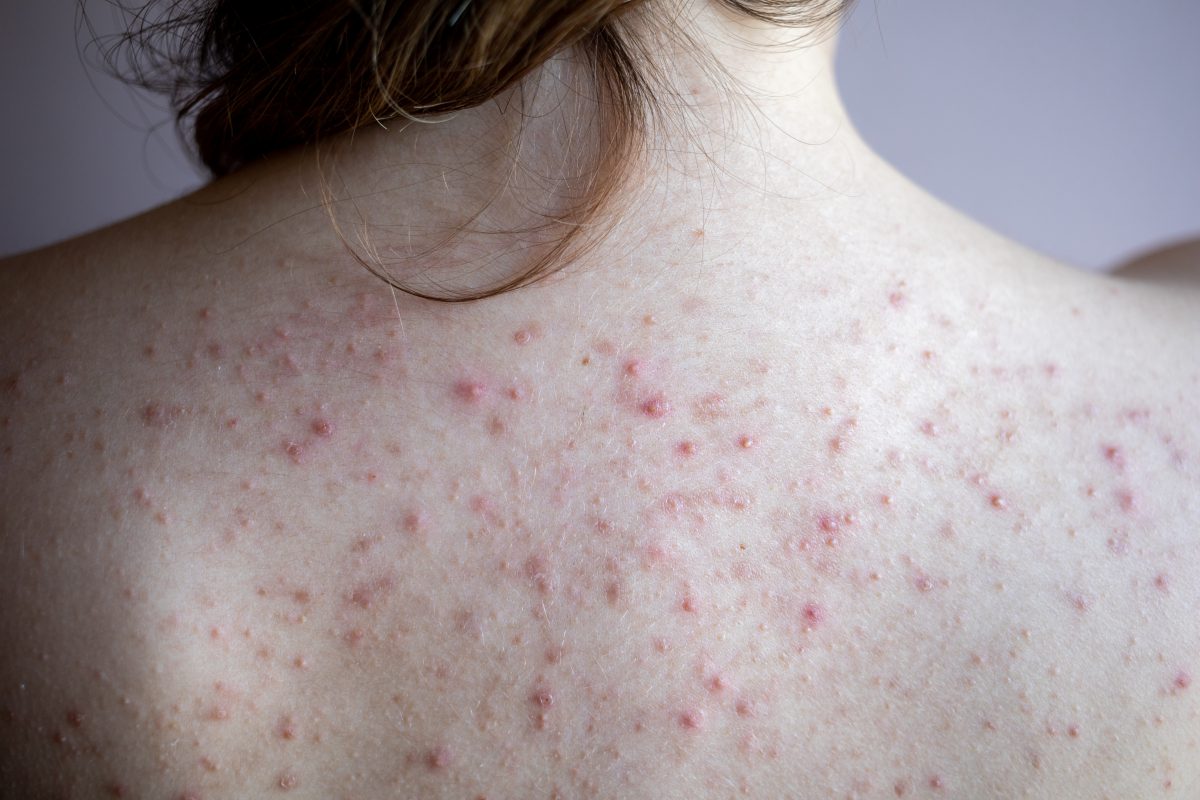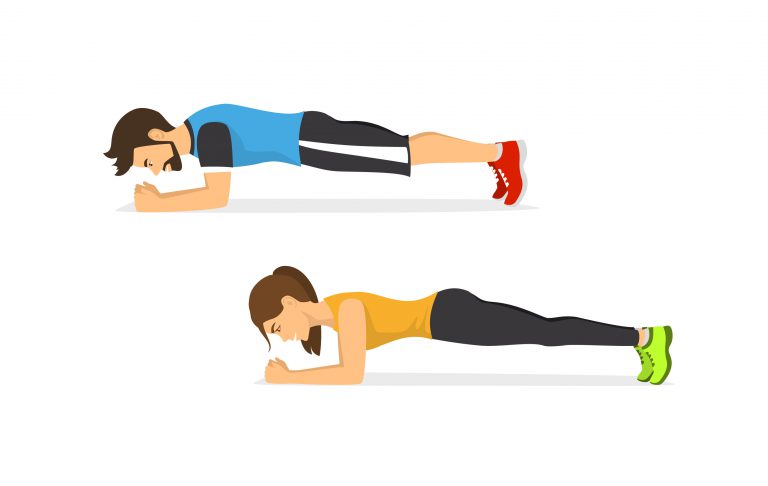Home » Featured Articles » How to manage back acne
How to manage back acne

Mention acne and most of us think about the face but unfortunately, acne has no boundaries. It can appear anywhere. In fact, half of us with acne are likely to have it on our back. Despite this, a recent study found ‘truncal’ acne is possibly under-diagnosed and under-treated.
It may seem easy enough to cover up this type of acne but as socialising, exercising and swimming make a welcome return, find out how to ‘clear up’ rather than ‘cover up’ backne.
What causes back acne?
In most part, it’s the same reasons that cause acne anywhere else on the body – oil glands get blocked with dead skin cells, form a plug and hey presto, you’ve got zits!
Dermatologist and All About Acne member Dr Mei Tam says family history, hormones and severe stress can be triggers for most acne.
“Certain medications, including corticosteroids can also cause back acne as well as specific diseases such as polycystic ovarian syndrome (PCOS),” said Dr Tam.
Gonna make you sweat
COVID kilos are likely to make sport and exercise more popular than ever. It’s great for your health and problematic for your backne. Exercise is likely to make you sweat and sweaty activities can aggravate back acne.
“That’s not an excuse for not exercising!” says Dr Tam.
“Clothing that doesn’t allow your skin to breathe, including active wear, can be specific causes of back acne but unlike our hormones, clothing we can do something about,” she adds.

So once you’ve decided that you like the look of the clothing, check the label and see if it’s going to be kind to your skin. Cotton is a winner.
“Anything that causes friction or rubbing on your back can result in acne. This is known as acne mechanica,” says Dr Tam.
A backpack, the strap from a handbag, chairs or gym equipment can irritate your skin and trigger acne.
Humidity also has a lot to answer for. Not only does it play havoc with our hair and sap the energy, it can also causes pimples on the back. A timely warning with spring here and humidity already in the air.
Taking whey protein supplements can also aggravate acne in certain patients as it is derived from dairy. Dr Tam suggests trying plant based protein supplements instead.
Back acne challenges
The skin on the back is thicker and more sebaceous (which means it has more oil-producing glands) than other areas of the body and comes with its own challenges.
Stating the obvious, it’s your back so it’s difficult to reach and clearly see what’s going on. This can make treating your back acne a little tricky.
It can also make treatment expensive as it’s a large area requiring a large amount of treatment but the good news, as with all acne management options, is that there are several high quality, cost effective options.
Choosing cleansers
Whether treating your face or back, the right cleanser can make a big difference to acne prone skin.
Dr Tam suggests trying to unblock pores with salicylic acid or benzoyl peroxide washes and gentle exfoliation; no harsh scrubbing!
Just because the skin on your back is thicker than your face and less sensitive, gentleness still applies.
“You can’t scrub away acne. Being overly vigorous with your cleansing is far more likely to aggravate the skin and lead to further inflammation and more breakouts,” warns Dr Tam.
“Look for cleansers that are specifically for acne prone skin. Companies have spent the time testing these cleansers on people with acne making them a more appropriate option than general cleansers,” explains Dr Tam.
Salicylic acid has been used to treat various skin conditions for more than 2,000 years! It works by softening keratin, which forms part of the skin structure. In acne, salicylic acid is oil-soluble, can penetrate to dissolve sebum, is anti-inflammatory and also works as an exfoliant to prevent clogging and improving acne.
Avoiding price pain
Acne is enough of a pain so here’s a few skin care tips to reduce the pain to your hip pocket.
“In Australia we have access to high quality, affordable skin care ranges and acne treatments,” says Dr Tam.
It’s a myth to think the more you spend on acne products, the better they are.
“The best acne products are those that have been developed for people with acne prone skin and rigorously tested,” explains Dr Tam. “Go for evidence over claims.”
Spend an extra minute to read that label properly, do some quick online research of a reputable site or just ask your pharmacist, GP or dermatologist for their advice.
We did this with La Roche-Posay’s Effaclar Micro-Peeling Purifying Gel Cleanser. The product says it’s for ‘acne prone skin’, the company’s website confirms it was ‘scientifically proven for face, chest and back acne’ and provides study results to prove its point.
Size matters
It’s not something we typically say when it comes to managing acne but here we go – size matters! Larger sizes of skin care products are often cheaper than smaller sizes so do the math and save your dollars.
When it comes to acne medications, because the back is a large area, some topical medicines may be inappropriate for cost reasons.
“Medication such as topical or oral antibiotics as well as hormonal treatments including the oral contraceptive pill are options for back acne. As with facial acne, if back acne is severe then oral isotretinoin should be discussed with your dermatologist,” explains Dr Tam.
Give it time
We all want acne gone as fast as possible but all good things take time right?
Yes says Dr Tam but there are limits on that.
“Once you’ve applied the cleanser to your back, allow five minutes before washing it off so it has time to penetrate the skin,” explains Dr Tam.
“If you’re applying a topical treatment, let that dry before putting clothes on,” she adds.
Acne treatment typically needs at least four weeks to work so if your back acne hasn’t improved at all during that time, it’s time to head back to your GP or dermatologist.
“Treatment is important as people with back acne can experience the same issues as those with facial acne – pigmentary problems, scarring and psychological harm,” says Dr Tam.
Top Five
Whether it’s a few pimples that are a minor annoyance or severe acne causing pain and embarrassment, here’s Dr Tam’s top tips for back acne:
1. Keep it loose – wear loose-fitting, breathable clothing such as cotton.
2. Look for the magic words – ‘developed for acne prone skin’, ’non comedogenic’ or ‘non acnegenic’ on skin care products.
3. Improve your reach – get a long handle brush or lotion applicator to help with cleansing and treating your back.
4. Give it four weeks – if there’s been no improvement in your acne by then, see your GP or dermatologist.
5. Reduce pressure – apart from stress being an acne trigger, backpacks, shoulder straps, leaning back in chairs can also cause friction and backne.
